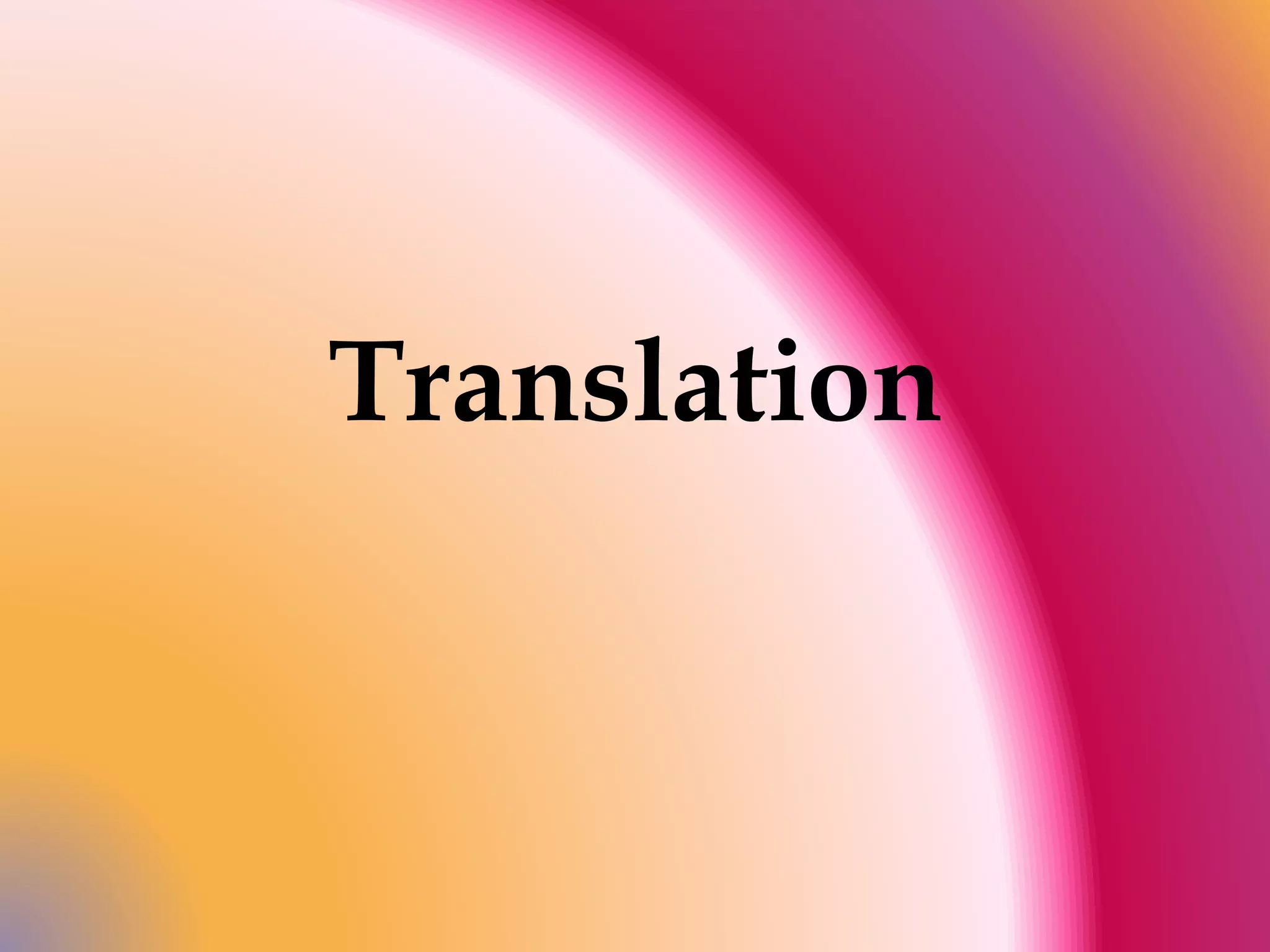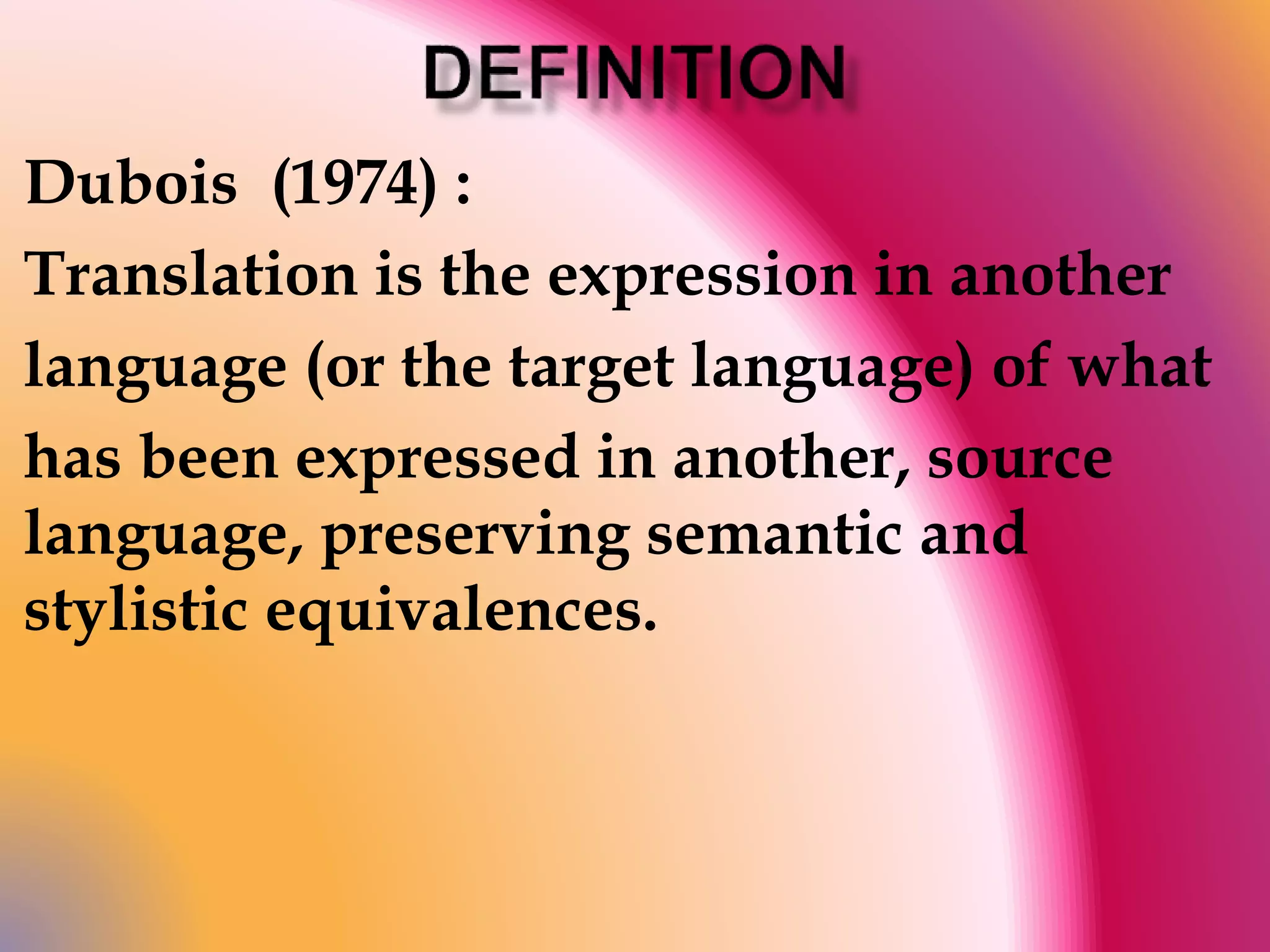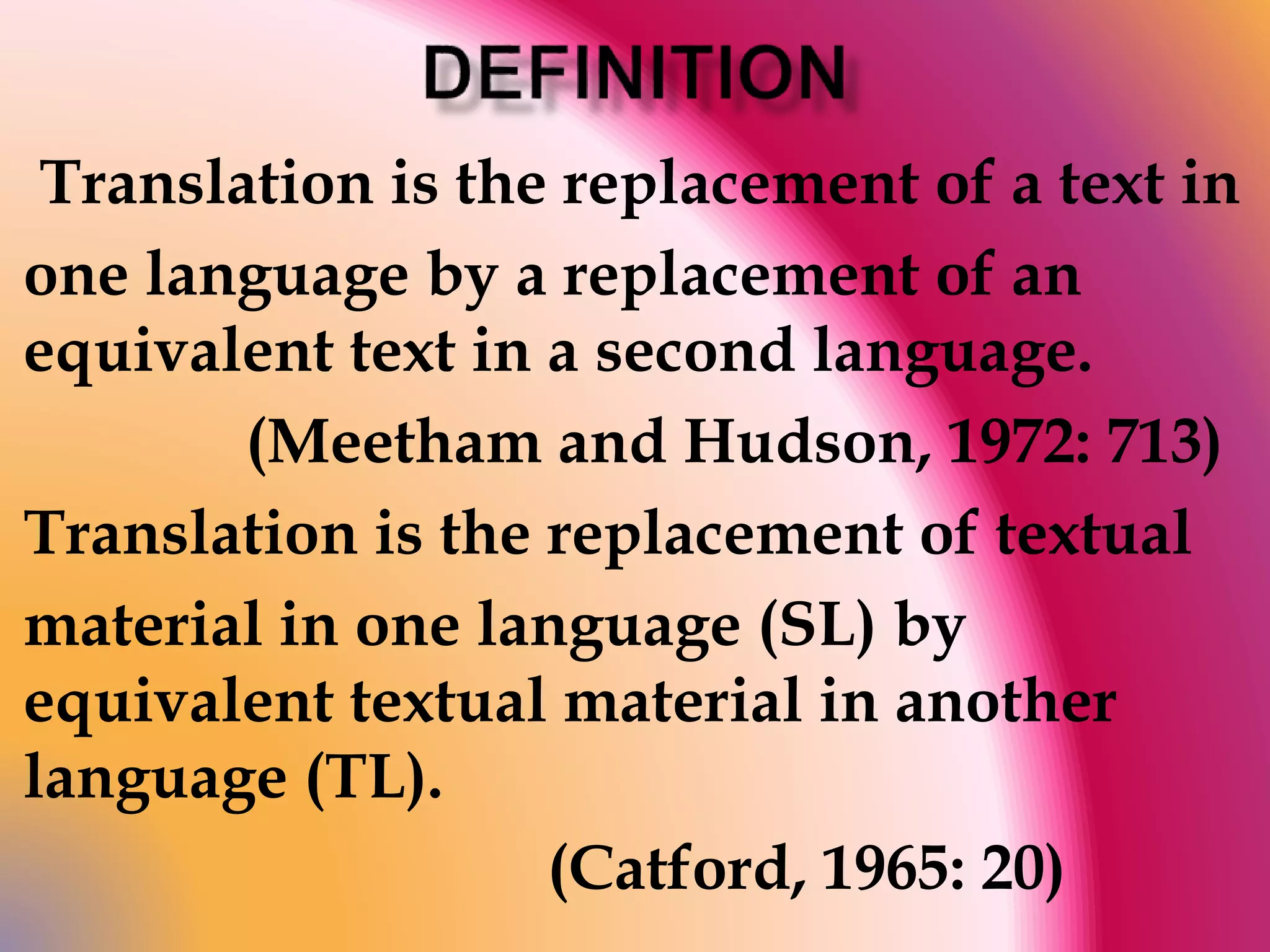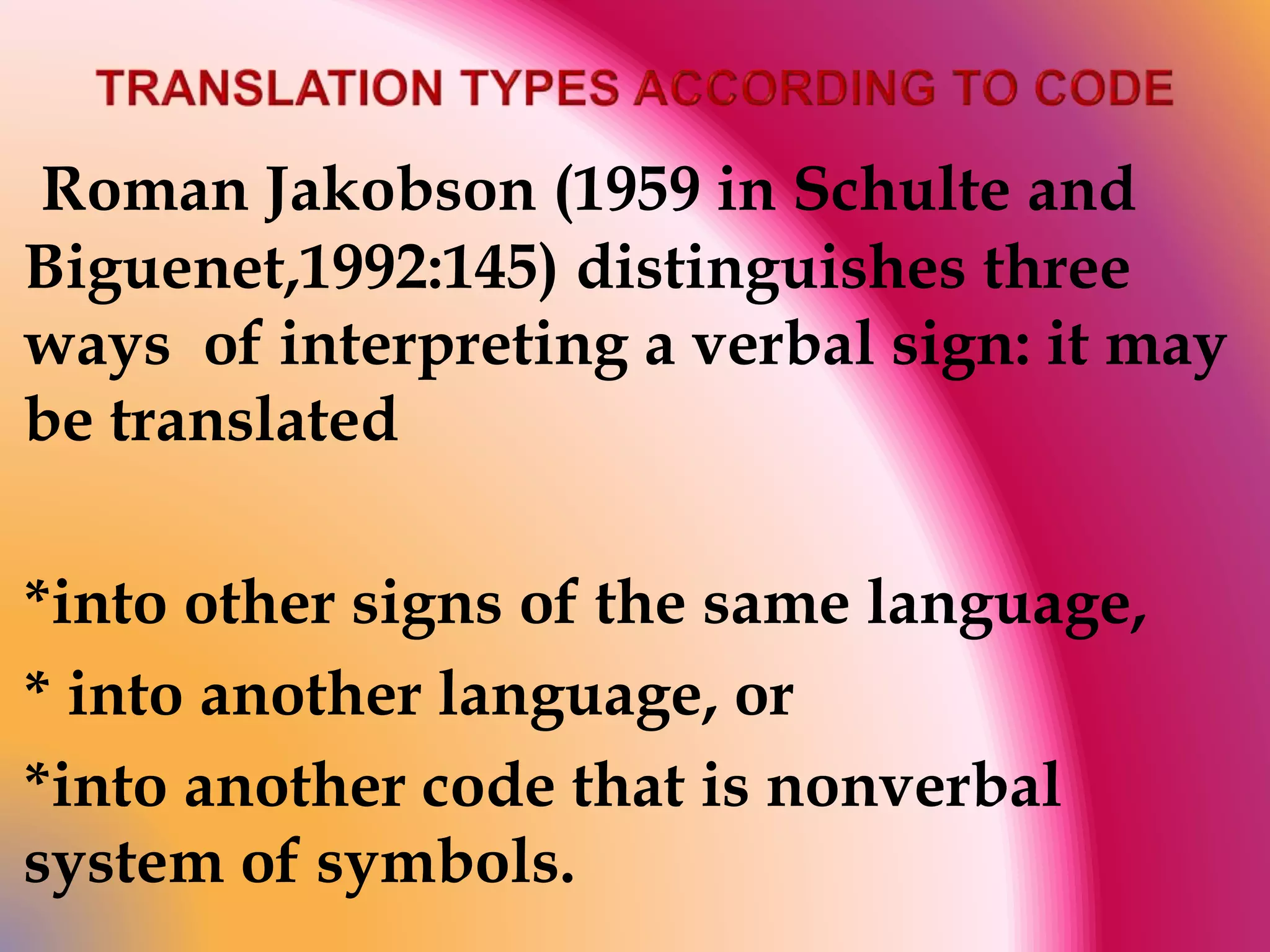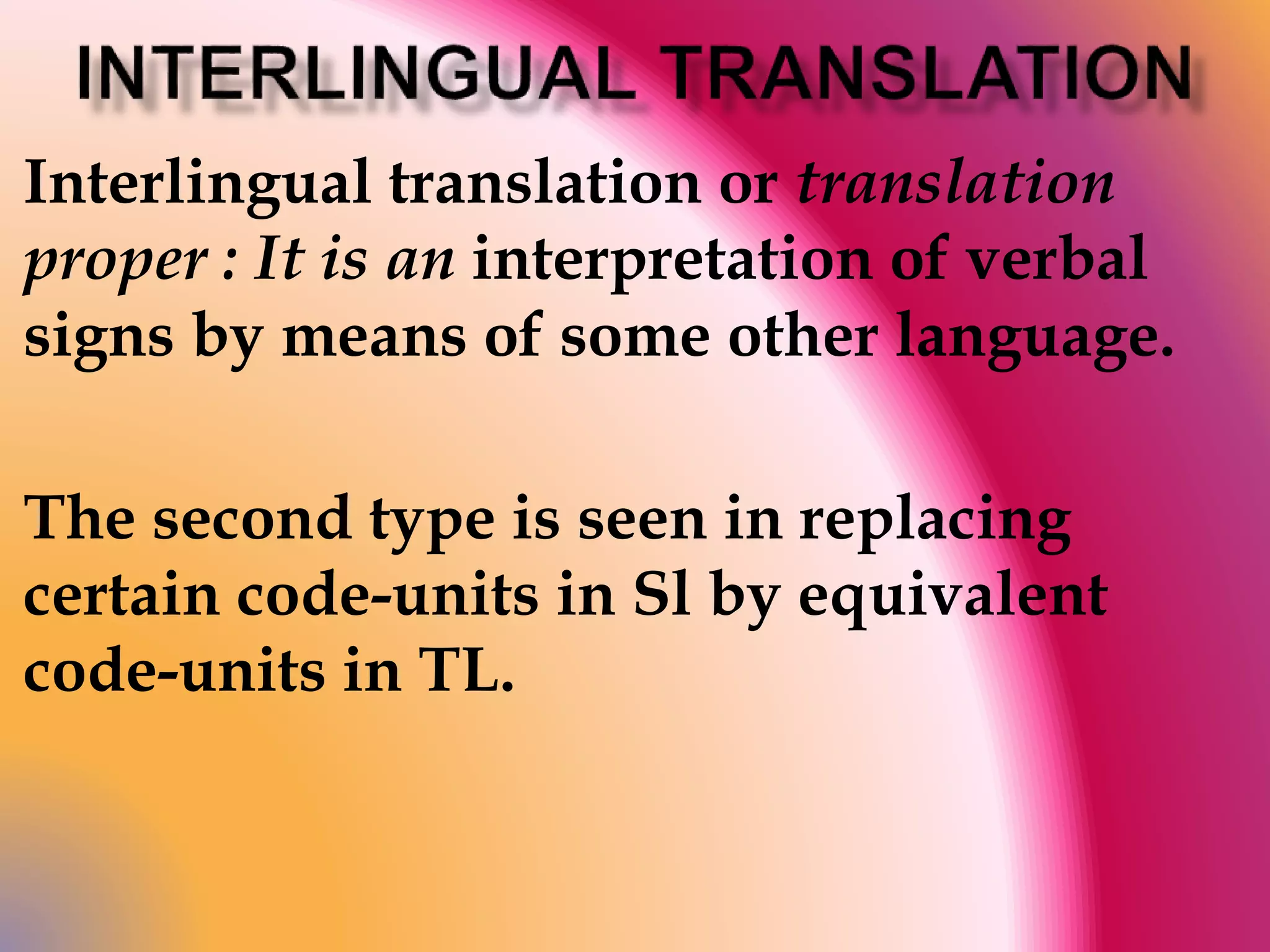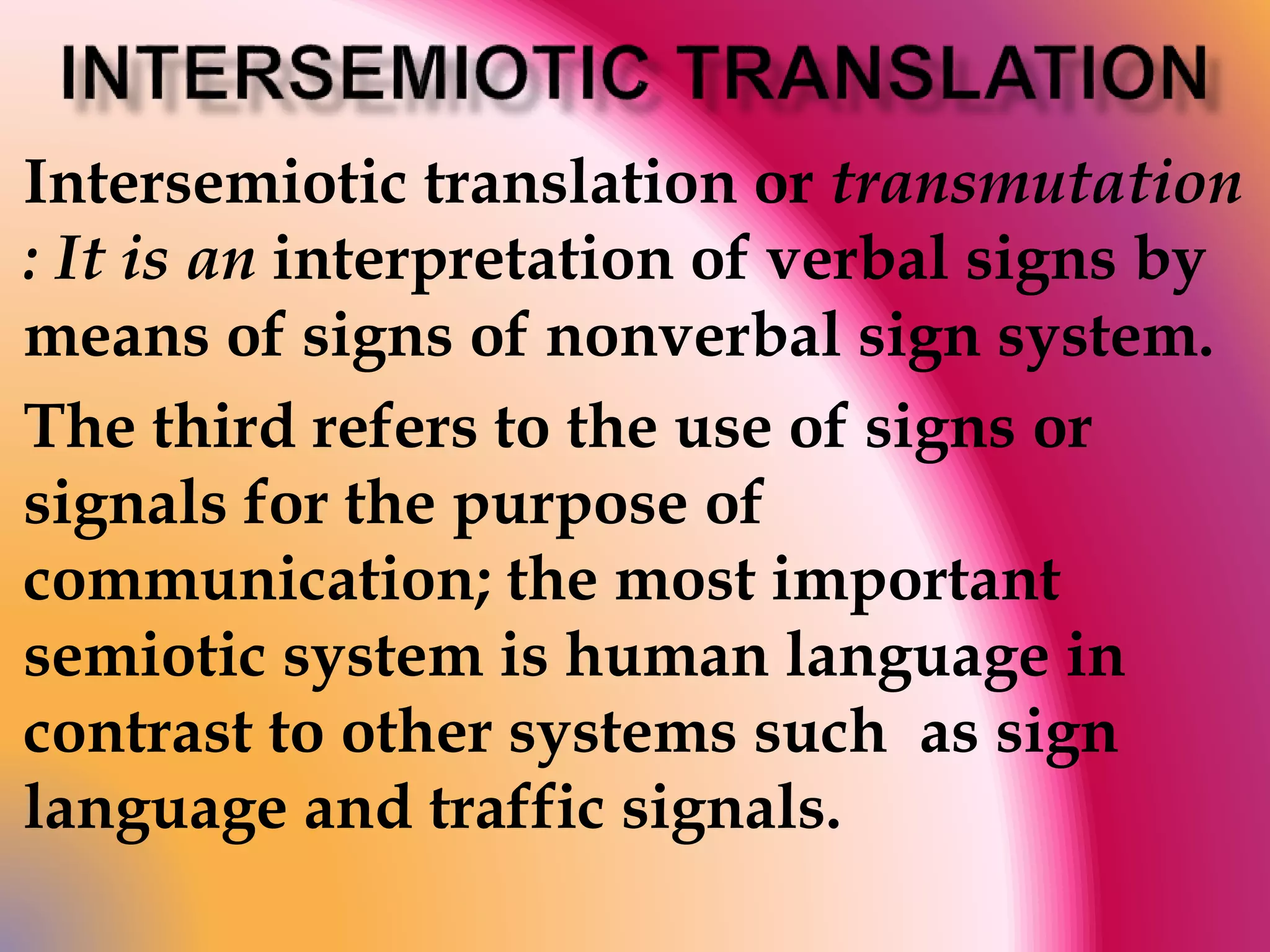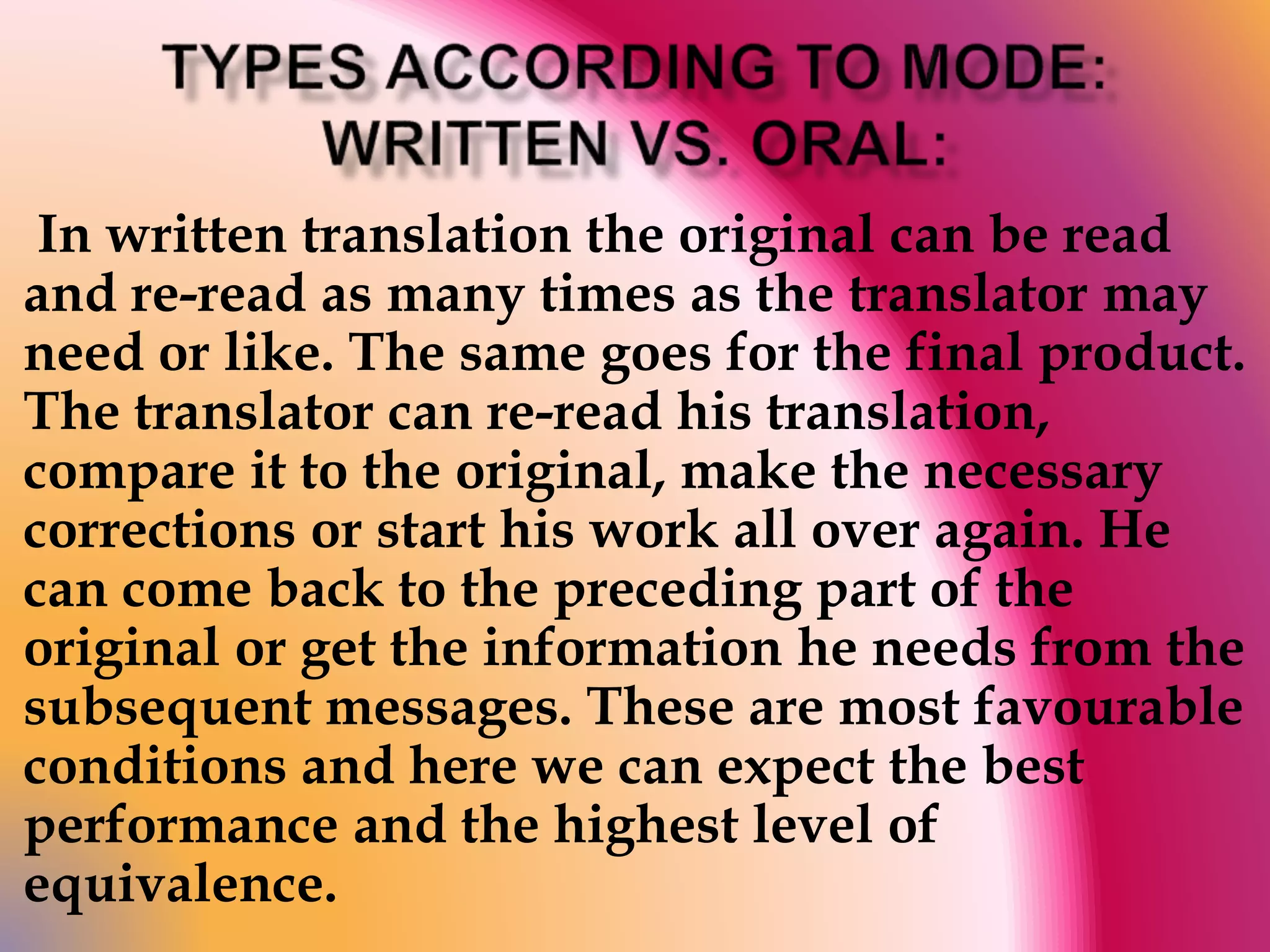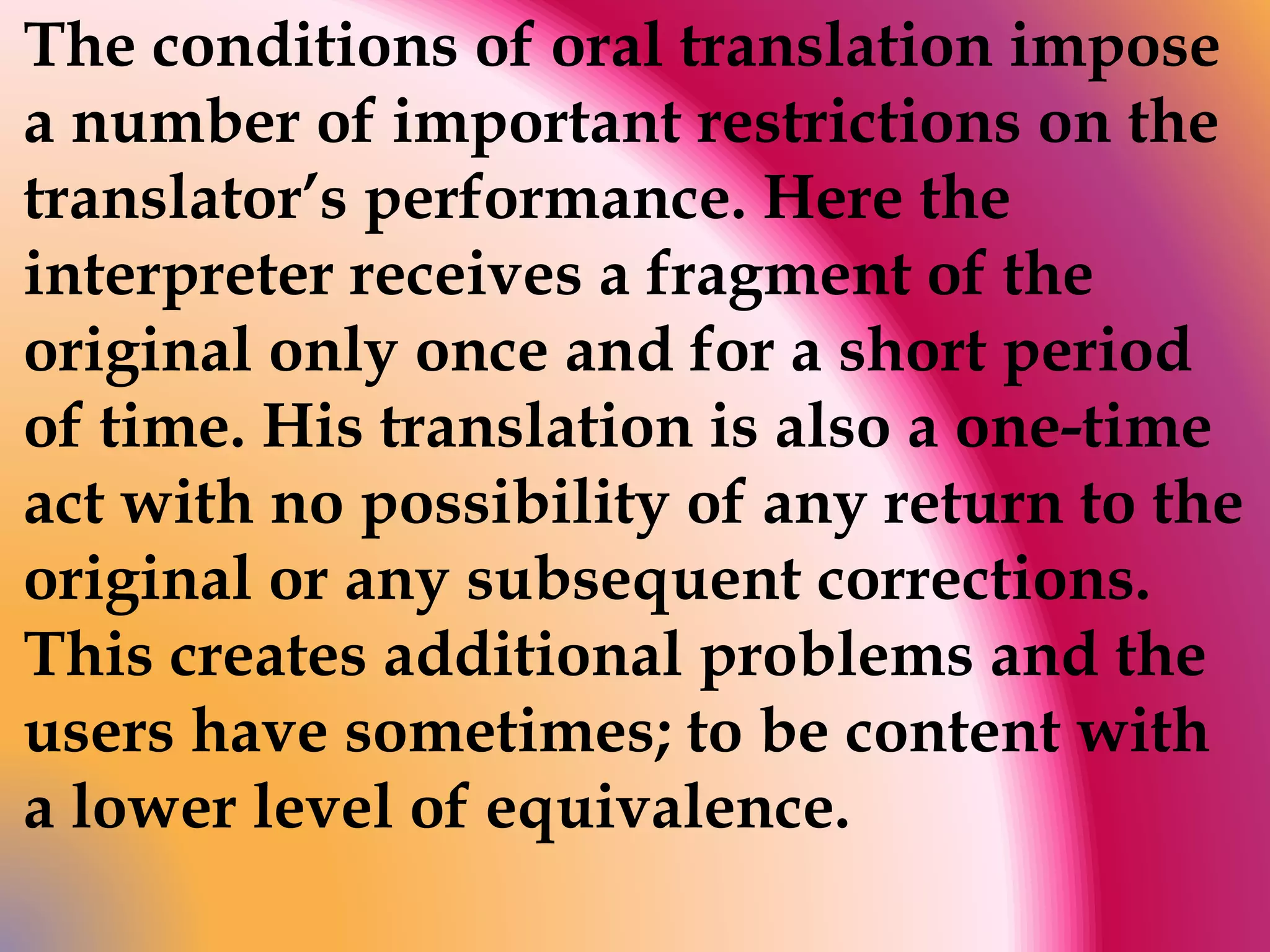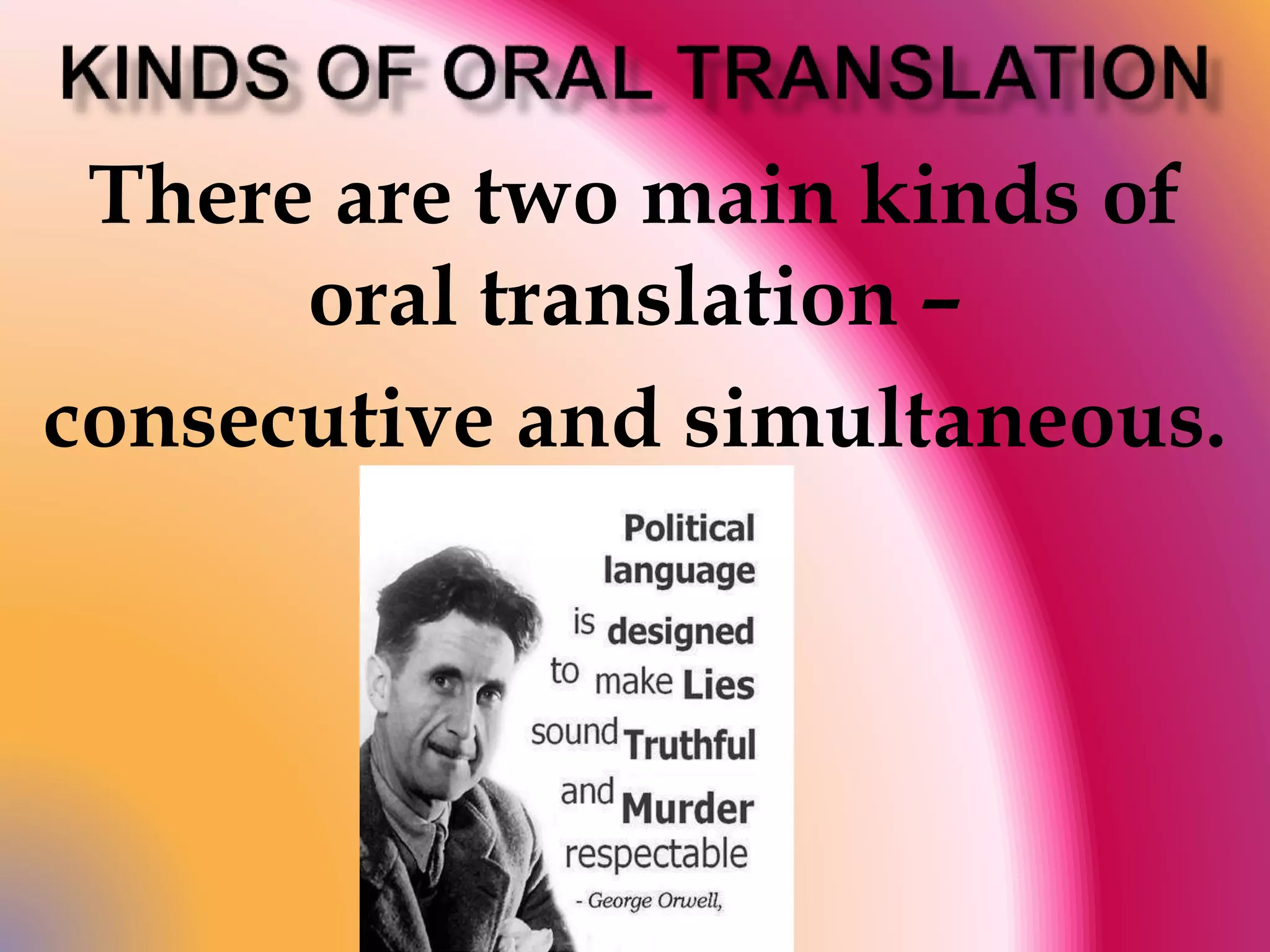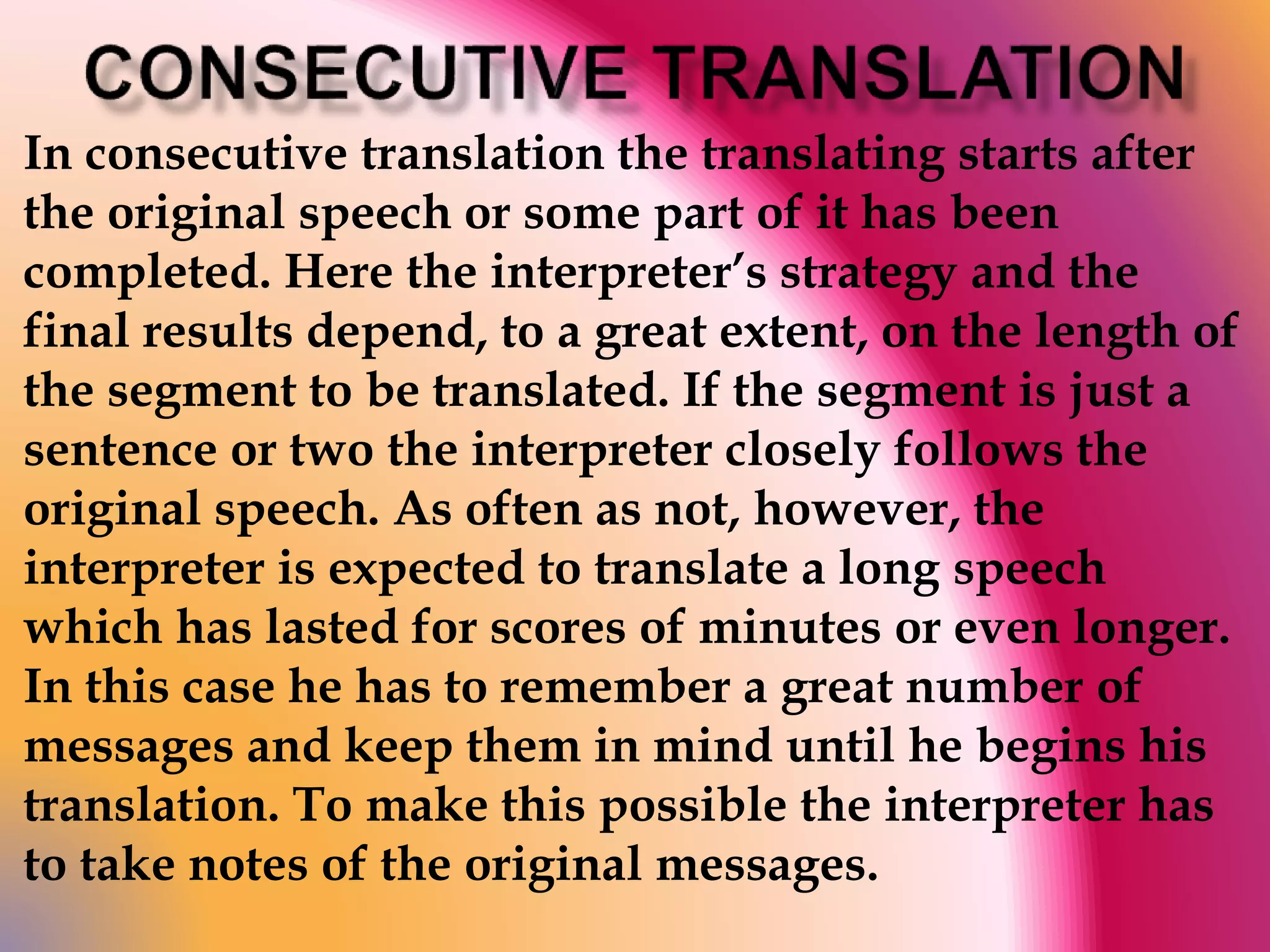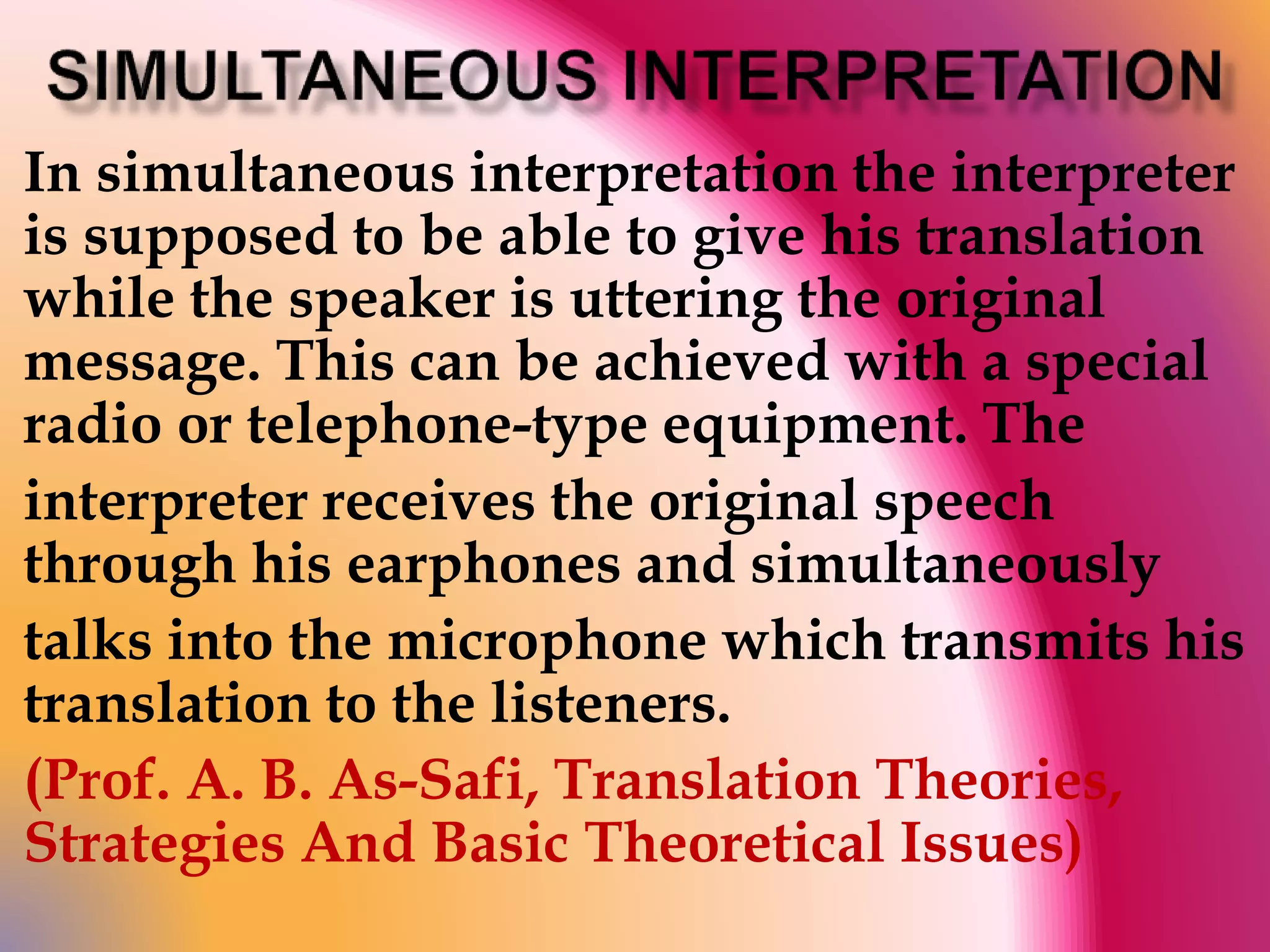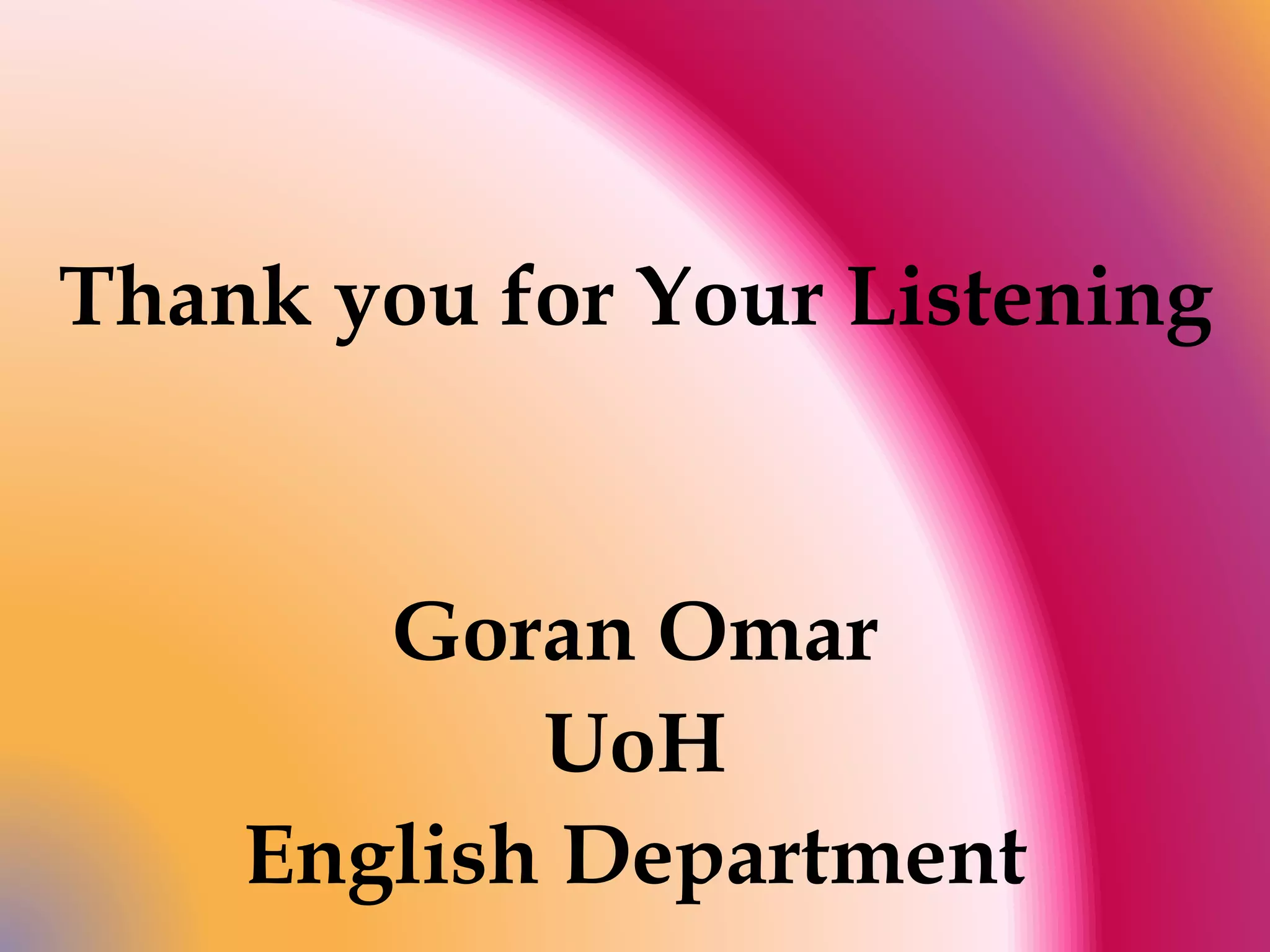Translation involves reproducing the meaning and style of a source language text in the target language. There are three main types of translation: intralingual (rewording within the same language), interlingual (translating between languages), and intersemiotic (translating between verbal and nonverbal sign systems). Written translation allows revising and correcting the target text, while oral translation is done simultaneously or consecutively with limited time and inability to revise. Simultaneous interpretation involves translating the source speech simultaneously as it is uttered, while consecutive interpretation involves translating after segments of the source speech.
